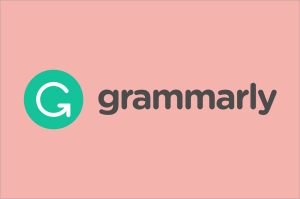Key Takeaways
- Web 2.0 sites with high Domain Authority (DA) create powerful backlinks that significantly boost your website’s search visibility.
- Top platforms like Medium and LinkedIn offer high-authority backlink opportunities that remain effective in 2025.
- A strategic mix of free and premium Web 2.0 sites creates a diverse, natural-looking profile that search engines reward.
- Quality content on Web 2.0 platforms drives both direct referral traffic and improves your main site’s search rankings.
- AmpCast generates 8 content formats from a single topic and distributes to 300+ sites including high DA Web 2.0 sites, building organic traffic that enhances the overall content marketing strategy.
Web 2.0 Sites Explained
Web 2.0 sites are the evolution of static web pages into interactive, user-generated content platforms. These platforms allow you to create microsites or blogs on their domains, essentially giving you access to their established Domain Authority (DA).
Unlike traditional link building where you’re simply requesting links, Web 2.0 platforms put you in control—you create the content, determine the anchor text, and decide the linking strategy. This level of control makes them particularly valuable in a comprehensive content creation strategy.
The concept emerged in the early 2000s, transforming the internet from a one-way information channel into a collaborative environment. Today, these platforms have evolved into sophisticated content ecosystems with millions of active users and exceptional domain authority.
These interactive sites also mean your content can take off on its own, getting you extra visibility beyond just the backlink boost.
How AmpiFire Works:
- Research & Target: Find high-demand topics your buyers search for
- Create & Repurpose: AmpiFire’s AmpCastAI generates news articles, blogs, videos, podcasts, infographics, slideshows, and social posts
- Distribute & Amplify: Auto-publish to 300+ sites including Google News, YouTube, Spotify, and major news networks
Get more traffic from people who want to buy your stuff, and powerful “As Seen On” trust badges for your site.
Do It Yourself (with AI), Done For You Content, & 100% Managed Organic Growth options available.
Grow Your Free Traffic From Everywhere
Top Free Web 2.0 Platforms
1. Medium (DA 95)
Medium allows you to create beautifully formatted articles with embedded images, videos, and backlinks to your main site. What makes Medium particularly valuable is its built-in distribution system. Your content can be discovered by Medium’s algorithm and showcased to readers interested in your topic.
The platform allows you to create publication pages that function as themed blogs, enabling you to build topical authority around your key subject areas.
2. Blogger (DA 91)
Blogger remains one of the most reliable free Web 2.0 platforms, maintained by Google with a powerful DA of 91. What makes Blogger particularly valuable is its direct connection to Google’s ecosystem, often resulting in faster indexing.
You can create multiple blogs under a single account, each targeting different niches or keywords. The platform offers customizable templates, allowing you to create professional-looking microsites that complement your main website while providing powerful backlinks.
3. WordPress.com (DA 95)
WordPress’ free version provides subdomain sites (yoursite.wordpress.com) with robust publishing tools, various themes, and excellent content optimization features.
Unlike self-hosted WordPress installations, WordPress.com handles all technical aspects including security and updates.
4. Sites.Google.com (DA 96)
Sites.Google.com has an impressive DA of 96, making it one of the most powerful free Web 2.0 platforms available. This Google product allows you to create fully functional websites with multiple pages, navigation menus, and various content elements.
The platform’s integration with Google’s ecosystem often results in faster indexing and strong link recognition. Though not as feature-rich as some alternatives, its extraordinary DA more than compensates for any limitations in design flexibility.
5. Tumblr (DA 77)
Tumblr combines high DA or 77 with social sharing capabilities, making it uniquely powerful for content amplification. The platform supports various content formats including text, images, quotes, and videos, allowing for creative and engaging presentations.
Tumblr’s reblogging feature can help your content reach wider audiences, potentially generating additional backlinks from other users. While slightly lower in DA than some alternatives, Tumblr compensates with good content distribution potential.
Premium/Paid Web 2.0 Sites
1. LinkedIn (DA 99)
LinkedIn’s publishing feature provides access to incredible domain authority (DA 99) and professional audience targeting. While creating a basic profile is free, Premium subscriptions unlock additional publishing features, enhanced visibility, and better audience insights.
Articles published on LinkedIn can simultaneously build your professional brand while driving traffic to your main website. The platform’s built-in distribution to your network and followers provides immediate visibility that most other Web 2.0 sites cannot match.
2. Quora (DA 93)
Quora combines excellent DA of 93 with question-based content discovery that can drive highly targeted traffic. While basic participation is free, Quora offers premium options like Quora+ that enhance visibility and provide better analytics.
The platform’s unique structure allows you to provide detailed answers to industry-specific questions to establish expertise while naturally incorporating backlinks to supporting content on your main site.
Quora Spaces (premium communities) gives you additional opportunities to create themed content collections with greater control over presentation.
3. GitHub (DA 96)
GitHub has a DA of 96 and focuses on technical content, code repositories, and developer resources. While basic repositories are free, you’ll get enhanced collaboration features, better visibility controls, and additional storage on premium plans.
For technology companies, SaaS businesses, or organizations with technical products, GitHub is an unique opportunity to showcase expertise while building powerful backlinks.
The platform’s README files, wikis, and documentation pages all support markdown formatting with hyperlink capabilities.
Web 2.0 Submission Best Practices
Content Quality Rules
Search engines now evaluate content quality signals before passing significant link equity, making thin or poorly written content not just ineffective but potentially harmful to your site.
Each Web 2.0 property should contain at least 3–5 pieces of comprehensive, well-structured content that provides genuine value to readers.
Aim for minimum 800 words per post, with proper formatting including headings, paragraphs, and relevant images to keep your readers hooked on your articles.
Anchor Text Strategy
Anchor text remains critical for safe, effective Web 2.0 link building. The days of repeatedly using exact-match keywords as anchor text are long gone, replaced by sophisticated link profiles that mirror natural linking patterns.
Vary your anchor text across different Web 2.0 platforms rather than using identical phrases. This creates a more natural profile that avoids algorithmic penalties.
Submission Frequency
Strategic pacing of Web 2.0 submissions prevents triggering spam filters while building sustainable authority. Stagger your submissions across different platforms rather than submitting multiple contents simultaneously.
This creates a more natural acquisition pattern that mimics organic growth. Maintain a consistent publishing schedule on established Web 2.0 properties, adding fresh content regularly (monthly or quarterly) to signal active management.
Scale Your Web 2.0 Strategy with AI-Powered Content Distribution
Building an effective Web 2.0 traffic requires consistent, high-quality content creation across multiple platforms—a time-consuming process that many businesses struggle to maintain. AmpiFire removes this bottleneck by using AI to automatically create and distribute content to Web 2.0 sites as part of your overall content marketing strategy.
Instead of spending hours writing unique content for each Web 2.0 platform, researching submission guidelines, and manually posting across dozens of sites, our AmpCast technology does these time consuming tasks for you.
Our AmpCast platform transforms any topic into 8 different content formats: news articles, blog posts, infographics, slideshows, interview podcasts, long-form videos, video shorts, and social posts. These are automatically distributed to over 300 high-authority sites including Google News, YouTube, Spotify, Instagram, Tiktok, Pinterest, Fox affiliate sites, and MSN.
Additionally, your content reaches powerful Web 2.0 platforms like WordPress, Medium, and LinkedIn, creating an even broader digital footprint across the internet’s most trusted publishing sites. Rather than manually building Web 2.0 properties one by one, our AI-powered platform creates diverse content formats that naturally attracts organic traffic.
When your business appears everywhere your customers are looking, you become impossible to ignore. The more places people see your brand, the more they trust you, remember you, and ultimately choose you over competitors who only show up in one or two places.
Frequently Asked Questions (FAQ)
Are Web 2.0 backlinks still effective in 2025?
Yes, quality Web 2.0 backlinks remain highly effective in 2025 when implemented correctly. The key difference from previous years is higher quality requirements—thin content or obvious manipulation no longer produces positive results.
Today’s effective approach focuses on creating valuable content assets across high-authority platforms that provide both direct user benefits and contextually relevant linking opportunities.
How many Web 2.0 sites should I use per month?
Quality consistently outperforms quantity in contemporary Web 2.0 implementation, with 20–30 well-developed content typically delivering better results than 100+ underdeveloped ones.
Focus your resources on creating substantial content that provides independent value rather than rushing to build numerous thin sites.
Should I use the same content across multiple Web 2.0 sites?
No, using identical content across multiple Web 2.0 platforms significantly reduces effectiveness while increasing risk. Search engines easily identify duplicate content, typically choosing one version to index while ignoring or devaluing others.
This filtering means duplicated content wastes creation efforts while potentially triggering quality concerns that affect your broader site performance.
How can AmpiFire optimize my Web 2.0 backlink strategy?
While traditional Web 2.0 strategy requires manually creating unique content for each site, AmpiFire’s AmpCast platform automates the entire process by crafting content tailored specifically for each Web 2.0 platform’s unique requirements and audience expectations.
Our system transforms a single topic into 8 different content formats (news articles, videos, interview podcasts, infographics, slideshows, blog posts, social posts, and short videos) and automatically distributes them across 300+ high-authority sites including WordPress, Medium, LinkedIn, Google News, YouTube, Spotify, and major news networks.
Author
-
CEO and Co-Founder at AmpiFire. Book a call with the team by clicking the link below.
Related Posts

5 Free Infographic Submission Sites with DA Above 50 [2025 List]
Learn 5 free high-DA infographic submission sites to boost traffic and earn quality backlinks.

Grammarly Premium Account for Free: Online Grammar & Plagiarism Checker Download Guide 2025
Are you looking to take your writing skills to the next level? If so, you’ve probably heard of Grammarly, the…

Best YouTube Thumbnail Guide: Examples & Best Practices 2025 for High CTR
Key Findings: Thumbnail Research: Here at AmpiFire we did extensive research across several published studies, top channels and our own…

Ecommerce Scaling Secrets: Features, Benefits & Pricing – Facebook & Paid Ads Course Explored
Master Facebook ads with Alex Fedotoff's proven marketing strategies and scaling secrets for eCommerce success

Paid Advertising vs. Content Marketing Comparison: Are Facebook Ads Worth It?
Are you looking for the best content marketing strategies to use for your business? Here's a breakdown on whether paid…

How To Get Any Site Or Offer Published On 8-Figure Traffic Sites Like Bloomberg, Nasdaq, Yahoo! News & More
Borrow the Authority of established brands; get them talking about you. Get your site or offer published on sites people…










